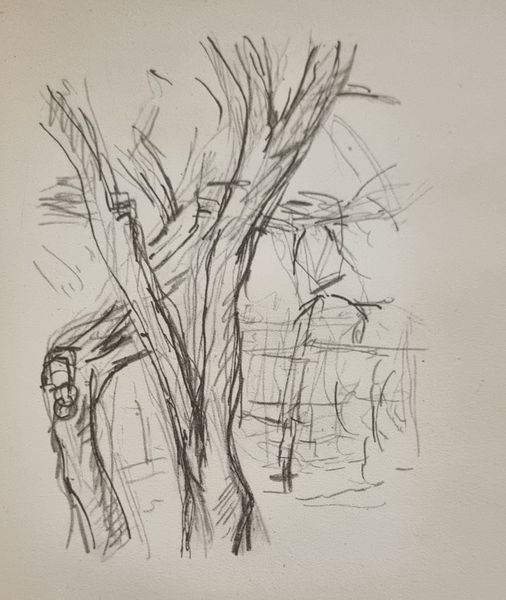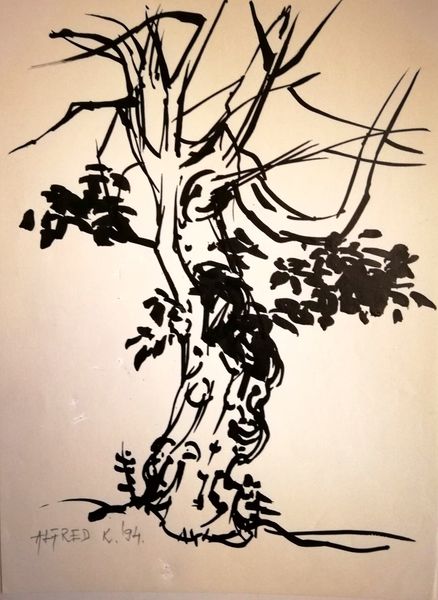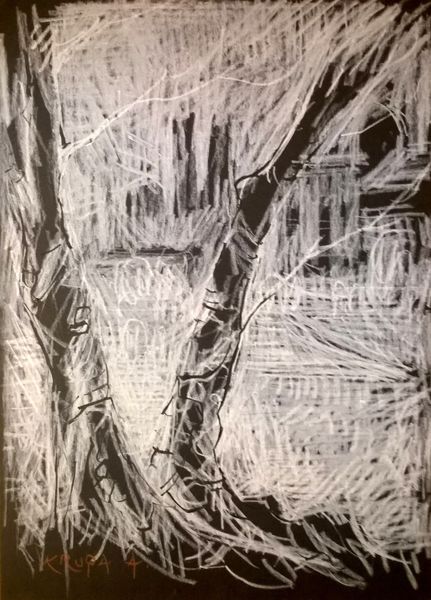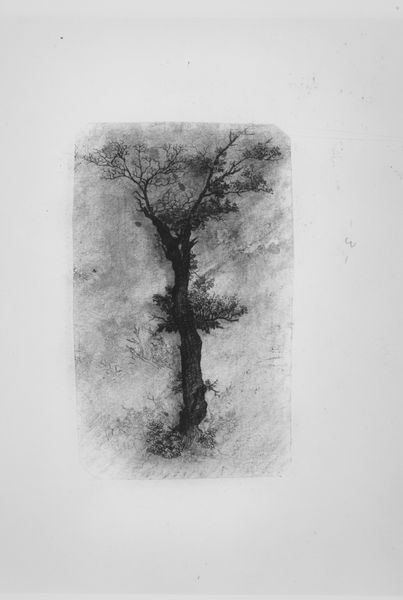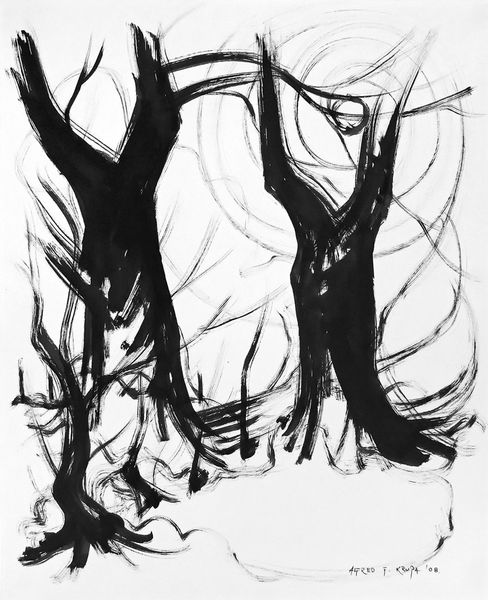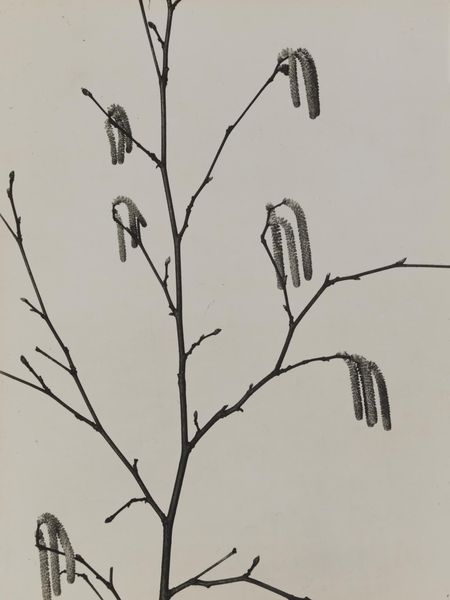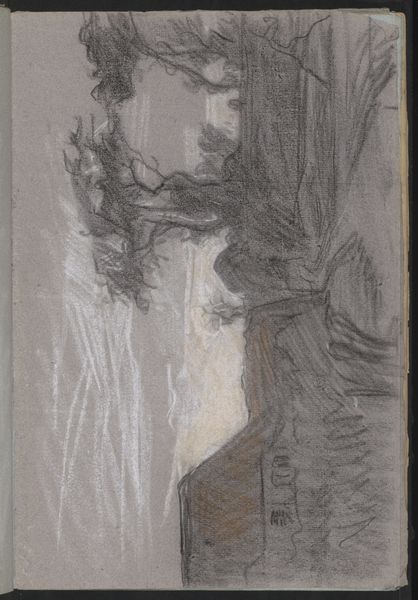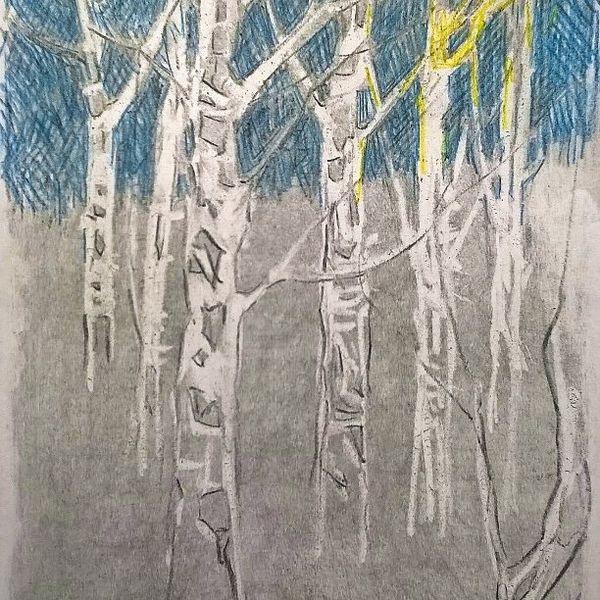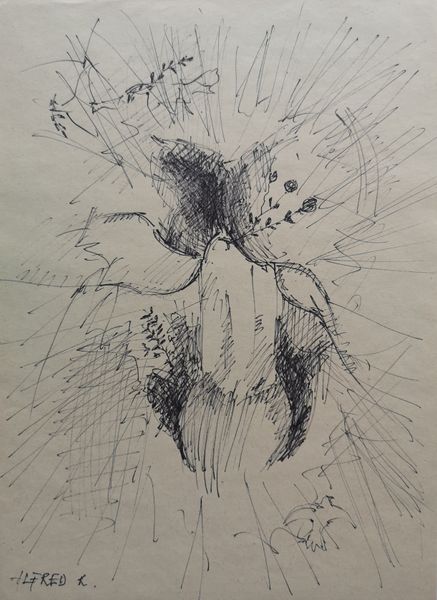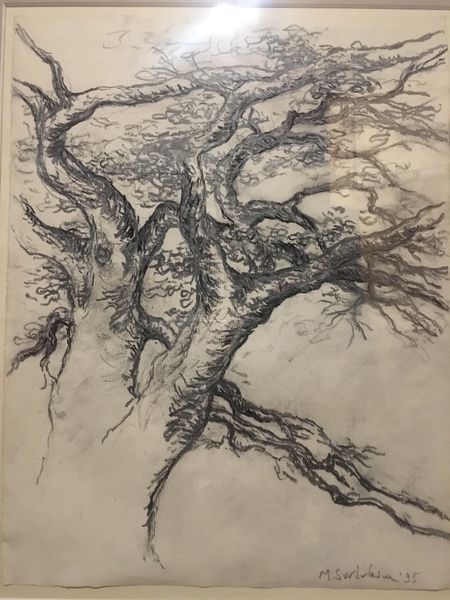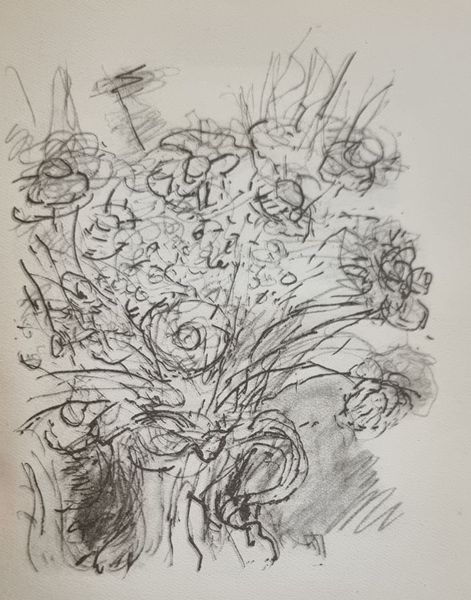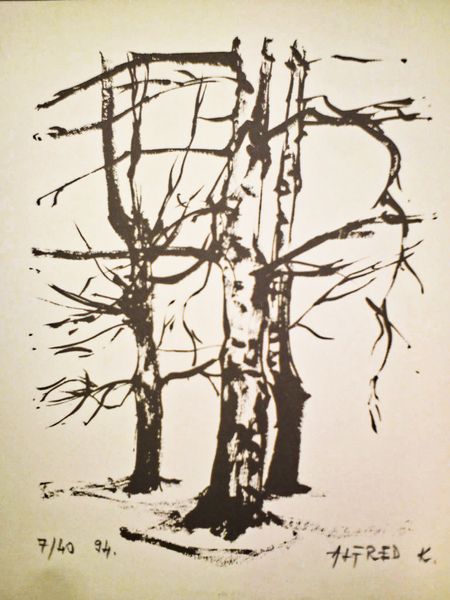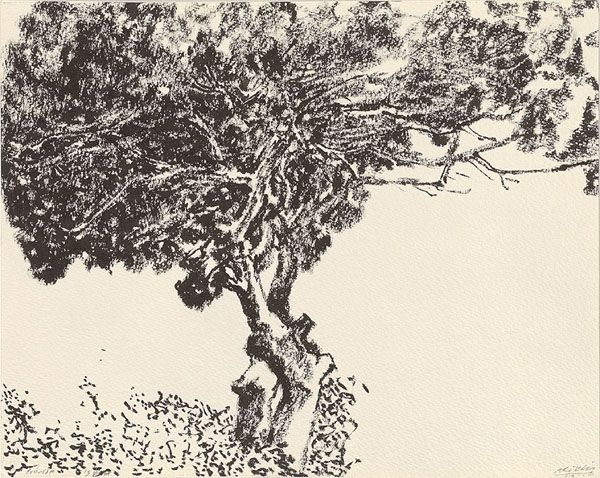
drawing, pencil
#
drawing
#
light pencil work
#
pen sketch
#
pencil sketch
#
landscape
#
form
#
personal sketchbook
#
sketchwork
#
ink drawing experimentation
#
pen-ink sketch
#
pencil
#
line
#
sketchbook drawing
#
sketchbook art
#
fantasy sketch
Copyright: Bela Czobel,Fair Use
Editor: This drawing, attributed to Czóbel Béla from 1956, titled "Fa," which means "tree" in Hungarian, appears to be a pencil sketch. The swirling lines give it a very dreamlike, almost unsettling feeling. What can you tell me about the context of this drawing? Curator: It’s fascinating to see Czóbel, primarily known for his vibrant paintings, explore this more intimate, almost hesitant style in a simple pencil sketch. Sketches like this give us insight into the artist's process, particularly regarding how Central European artists navigated representing the natural world while also participating in global, modernist movements. Do you think that an illustration, particularly an understated one, offered him a unique freedom of expression compared to painting? Editor: Possibly! Perhaps it allowed for a directness that grander works didn't. The subject matter seems fairly straightforward – it’s just a tree – but then I see what could almost be a human profile within the branches at the upper left... What do you make of that superimposition, intentional or not? Curator: Exactly! And the question of intention is key, isn’t it? The suggestion of a human presence alters our perception of the tree; suddenly, it becomes a symbolic figure or portrait. What does it mean, in the mid-20th century, to subtly embed the human figure within the landscape like this? Perhaps Czobel wanted to question the classical depiction of humanity in the modern age. What kind of tension do you perceive between the public role of the artist versus the solitary nature of this sketch? Editor: I see the tension! Knowing he mainly painted colorful pieces, it’s like he was speaking a different visual language when "off duty." That really reframes how I think about the artist’s entire body of work. Curator: Precisely! And considering its creation as a possible illustration, it forces us to ask: what stories were Czóbel trying to participate in, and how does that influence the image of the solitary tree? It adds a layer of social commentary that would be absent otherwise. Editor: I’m struck by the connection between what might be considered a preliminary drawing, versus a finished, displayed work of art. Curator: And perhaps that distinction breaks down when the “preliminary” drawing speaks volumes about the artist’s hand in society!
Comments
No comments
Be the first to comment and join the conversation on the ultimate creative platform.
